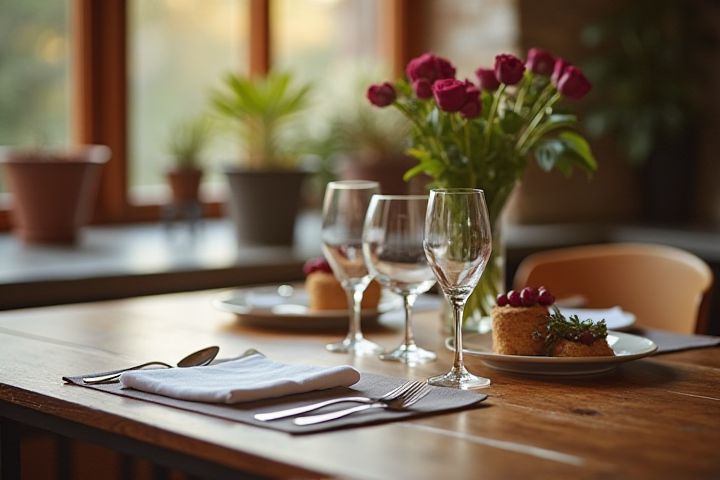
Choose a strategic date and time that enhances attendance, typically on weekends when potential buyers are free. Ensure your property is thoroughly cleaned and organized, making necessary repairs to create an inviting atmosphere. Promote your open house through various channels, such as social media, local community boards, and real estate websites, to reach a wider audience. Prepare informative materials, including property flyers and neighborhood information, to assist visitors in understanding the unique features of your home. During the event, engage with guests by answering questions and highlighting key aspects of the property, fostering a welcoming and informative environment.
How To Host An Open House Event
Set a clear date and time.
To host an open house event, first, establish a clear date and time that caters to your target audience; weekends typically attract more visitors. Consider local events or holidays that might conflict with your chosen timing, ensuring you select a date that maximizes attendance. Promote your event through various channels such as social media, community bulletin boards, and real estate platforms to generate interest. Clearly communicate these details in your marketing materials, so potential attendees know when and where to join you for an engaging experience.
Create an enticing invitation.
An enticing invitation for your open house event should include essential details and visually appealing design elements. Clearly state the date and time, preferably on a weekend, when potential visitors can attend; a prime time could be Saturday from 1 PM to 4 PM. Use high-quality images of the property, highlighting unique features such as a modern kitchen or expansive backyard, to grab attention. Incorporate a call-to-action, like "Join us for complimentary refreshments," to encourage engagement and make your event memorable.
Advertise through multiple channels.
To effectively advertise your open house event, utilize various channels such as social media, local community boards, and email newsletters. Create engaging posts and ads on platforms like Facebook and Instagram, reaching potential buyers in your target demographic. Leverage local real estate websites to showcase the event details, including the date, time, and unique features of the property. Consider distributing physical flyers in neighborhoods or at local businesses to increase visibility and generate foot traffic on the day of the event.
Prepare informative materials.
Creating engaging informative materials is crucial for a successful open house event. Design brochures that highlight property features, including square footage, number of bedrooms and bathrooms, local school ratings, and neighborhood amenities. Include floor plans, high-quality images, and a list of unique selling points to captivate potential buyers. Ensure you provide handouts with essential information about the buying process, mortgage options, and nearby community resources, empowering visitors with the knowledge they need to make informed decisions.
Stage the space attractively.
To stage your space attractively for an open house, begin by decluttering and deep cleaning every room to create an inviting atmosphere. Incorporate fresh flowers or potted plants, as studies show that greenery can enhance mood and draw attention to key areas. Use neutral paint colors and adequate lighting to create a welcoming ambiance, aiming for a temperature of around 68degF to ensure comfort for your guests. Finally, strategically position furniture to encourage flow and highlight your property's best features, ensuring buyers can easily visualize their future in the space.
Offer hospitality and refreshments.
To create an inviting atmosphere at your open house event, consider offering a variety of refreshments such as coffee, tea, bottled water, and light snacks like cookies or fruit platters. Setting up a designated area for hospitality encourages guests to relax and engage more freely, enhancing their overall experience. Aim for a balance of sweet and savory options, catering to different dietary preferences--think gluten-free or vegan choices if possible. Providing comfortable seating arrangements can also foster conversation and make your open house feel warm and welcoming.
Plan engaging activities or tours.
Design your open house event to include engaging activities such as guided tours every 30 minutes, allowing participants to explore different areas of your space. Create interactive stations where guests can learn about your offerings through demonstrations or hands-on experiences. Incorporate testimonials or success stories displayed on boards or screens, showcasing the impact of your services. Ensure to provide refreshments and materials about your business, giving visitors take-home information that reinforces their experience.
Utilize sign-in sheets for attendees.
Utilizing sign-in sheets for attendees at your open house event not only helps in tracking visitor numbers but also plays a crucial role in building future relationships. Ensure the sign-in sheet captures essential information such as names, email addresses, and phone numbers, allowing you to follow up with potential clients effectively. Position the sheet at a welcoming location near the entrance, preferably with an engaging staff member present to encourage attendees to provide their information. By implementing this simple yet effective strategy, you enhance your networking opportunities and create a more organized event experience.
Gather feedback for improvement.
Select a date and time for your open house that aligns with your target audience, such as weekends or evenings, ensuring maximum attendance. Provide clear and informative signage throughout the venue, highlighting key areas where you seek feedback, like design elements or service quality. Utilize feedback forms or digital tools, encouraging visitors to submit their insights, and consider offering incentives, such as a raffle or discount, to increase participation. After the event, analyze the collected feedback thoroughly to determine actionable improvements, enhancing future events and fostering a positive experience for attendees.
Follow up with participants post-event.
Following your open house event, it's essential to follow up with participants to maintain engagement and grow relationships. Personalized emails or messages should be sent within 24-48 hours, thanking them for attending and inviting feedback on their experience. Including a brief survey can help you gather insights on what worked well and areas for improvement, enhancing future events. Offering a special promotion or exclusive content to attendees can further encourage continued interest and interaction with your services.
